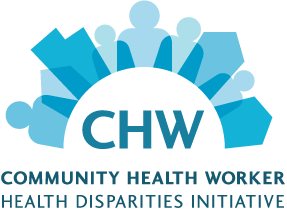Visión y Compromiso (VyC)
The charlas (informal group discussions) provided valuable information and guidance in developing a training plan for both regions. The charlas created an opportunity in which promotoras helped project staff learn more about their communities and better understand their dynamics. This understanding proved to be useful in implementing an effective project.
Location:
Los Angeles and Kern Counties, CA
Intended Population:
Hispanic/Latino population
Curricula Used:
Your Heart, Your Life: A Community Health Worker’s Manual for the Hispanic Community
Key Partners:
University of Southern California (USC) Clinical and Translational Science Institute’s Office of Community Engagement; USC Keck School of Medicine, Department of Preventive Medicine, Institute for Health Promotion and Disease Prevention Research
CVD Burden:
Cardiovascular disease (CVD), which includes heart disease, heart failure, and stroke, is the leading cause of death in California and is distributed across all populations although some racial and ethnic groups experience a disproportionate burden.1 VyC works with the Hispanic populations within southern California who experience some of the greatest health disparities and who represent some of the greatest diversity in the state. VyC focuses on two different geographic health disparities areas in southern California: a rural area (Kern County) and an urban community (Los Angeles County). These communities are diverse, vibrant, and underserved.
Implementation:
VyC trained and supported 25 promotoras in the use of the NHLBI heart health curricula in a 2-day face-to-face training. In addition, 33 promotoras received the NHLBI curriculum training via a 7-session webinar series—held for 7 consecutive weeks. The trained community health workers (CHWs) conducted 49 community education workshops with 730 community members, maintaining a 73 percent retention rate throughout the 11-week course (without financial incentives for participation). Initial trainings were enhanced with online training modules and webinars, texting, and social networking. For example, VyC developed a Spanish-language video that reviews the heart health curriculum, evaluation requirements, and tips on how to facilitate community education sessions.
Central to VyC’s approach was a Community Advisory Board composed of these promotoras, who met every 2 months to guide the project and help overcome barriers in implementation.
Evaluation:
The project used a mixed-methods design to evaluate the promotora capacity-building activities and community education efforts. Measures included knowledge, attitudes, and behaviors of CHWs and community members, level of satisfaction with training, and self-efficacy. VyC supplemented NHLBI evaluation tools with qualitative data gathered in charlas with experienced promotoras, interviews with community members, observational data collection, and satisfaction surveys.
1 Reynen, D. J., Kamigaki, A. S., Pheatt, N., & Chaput, L. A. (2007). The burden of cardiovascular disease in California: A report of the California Heart Disease and Stroke Prevention Program. Sacramento, CA: California Department of Public Health.
Last Updated: June 2014






